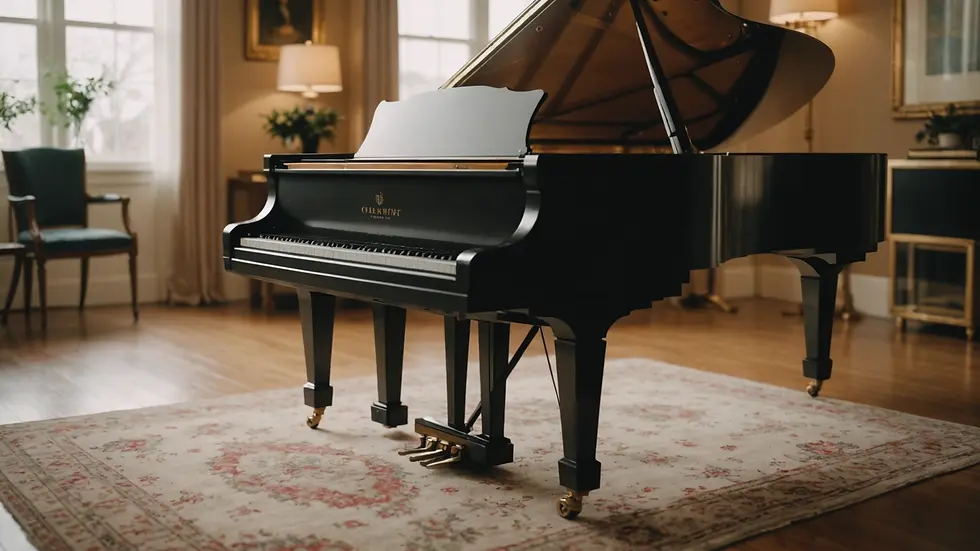Moving a piano can be a daunting task. It requires not only strength but also careful planning to avoid damage to both the instrument and the people involved. Whether you are relocating to a new home or just rearranging your living space, knowing the best practices for moving a piano can help you ensure a safe and efficient process. This guide will help you navigate each step of the piano moving process.
Why Moving a Piano is Different
Pianos are more than just heavy furniture; they are delicate musical instruments that can be quite difficult to handle. For instance, upright pianos typically weigh between 300 to 800 pounds, while larger grand pianos can weigh over 1,000 pounds. These significant weights require a careful approach to moving.
Moreover, pianos have sensitive internal mechanics that can be easily damaged if not properly supported during a move. A poorly executed relocation can easily lead to costly repairs, which can amount to hundreds or even thousands of dollars. An effective plan is essential not only to avoid damaging your piano but also to prevent potential injuries to the movers.
Preparing for the Move
1. Gather Your Tools
Before you begin the moving process, make sure you have all the necessary tools. Here’s a detailed list:
Piano dollies: These are special dollies designed for moving heavy loads safely.
Moving blankets: They protect the piano's exterior from scratches and dents during transport.
Straps and ropes: These secure the piano and prevent it from shifting.
Furniture sliders: Ideal for gliding the piano across smooth floors.
2. Measure Everything
Take time to measure the piano, doorways, hallways, and staircases. This prevents surprises when navigating tight spaces. For example, if you find that your upright piano is 57 inches tall, but your doorway is only 54 inches wide, you may need to look for alternative routes or adjust the piano's orientation.
Assess any tight angles, narrow stairs, or obstacles that might complicate the move. If your stairs have a landing or a turn, consider that too, as it requires precise maneuvering.
3. Enlist Help
Moving a piano is definitely a team effort. Ideally, you should have three to four people to assist you. If you feel unsure about the process, hiring professional piano movers is a smart choice. These specialists have the training and resources to ensure your piano is moved safely. Data shows that 90% of professional piano movers handle their tasks without incident, compared to 30% when non-professionals try to do it themselves.
The Moving Process
1. Prepare the Piano
Start by preparing the piano for the move. If it is a grand piano, remove the legs and lid. This makes it lighter and easier to transport. For upright pianos, ensure any loose parts are secured.
Wrap moving blankets around the entire piano and secure them with packing tape. This provides cushioning and protects the exterior during the move.
2. Position the Dollies
With your team’s assistance, carefully tilt the piano backward onto the piano dolly. Make sure the weight is distributed evenly. One person should guide the front, while others support the back and sides.
During this step, it's crucial to use proper lifting techniques. Lift with your legs and keep your back straight to prevent injury.
3. Moving the Piano
As you move the piano, clear a path to avoid obstacles. Use clear communication to ensure everyone is on the same page regarding movements. Moving at a steady pace ensures that no one gets injured.
If there are stairs involved, using a piano board is advisable. This ramp-like board can help safely move the piano up and down steps. Designate one person to manage how the piano is balanced during these transitions.
Final Steps
1. Setting Up in the New Location
Once the piano is at its new location, carefully maneuver it into its designated space. For grand pianos, placing them on a level surface is critical. An uneven floor can affect its internal components, which may impact sound quality.
After positioning, remove the moving blankets and inspect the piano closely. Look for any visible damage. If you notice scratches or other issues, consulting a professional for repairs may be necessary.

2. Final Tune-Up
Pianos often require a tuning after moving. Changes in humidity and temperature can affect how they sound. Scheduling an appointment with a qualified piano technician about two weeks post-move allows the piano to acclimatize.
Key Takeaways
Moving a piano may seem challenging, but with the right preparation and teamwork, it can be done smoothly. By gathering the right tools, measuring spaces, and communicating effectively, you can protect both your piano and the people involved.
Respect your instrument and handle it carefully throughout the process. With these tips in hand, you can enjoy making music in your new space. Happy moving!

